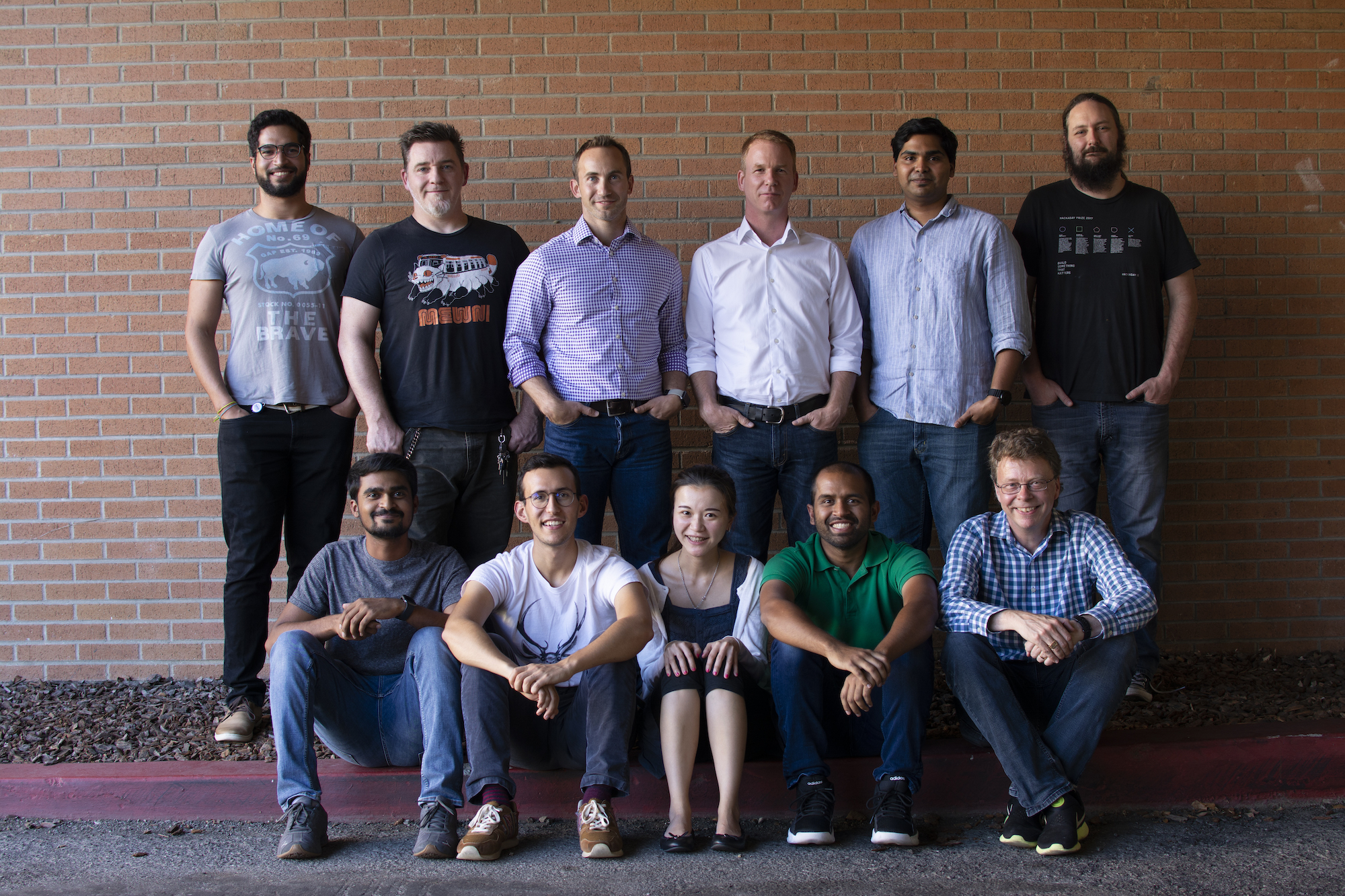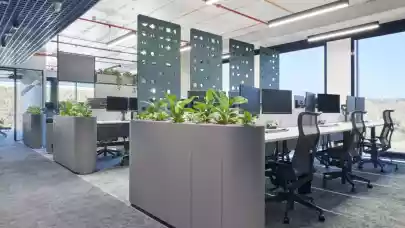
Digitizing commercial property provides endless new opportunities for owners and managers of large property portfolios. No one knows this better than Dr. Robert Herman MRICS, who left Hungary three years ago to start a tech company in California. He talked to us about the importance of technology in the property business and his new role as a member of the RICS in the Americas Board.
A few years ago we wrote about you starting your own company, REscan in California. Can you say a few words about what you do?
At REscan, we scan large commercial property portfolios using computer vision technology. This not only means that the buildings can be revisited and walked around like in a computer game but, more importantly, the use of laser scanners, computer vision cameras and machine learning makes it possible for us to transform spaces into data. This is a hugely valuable tool for managers and owners of large portfolios with properties in many countries.
It sounds very abstract, but come to think of it, it’s not so different from Google scanning and digitizing books which made it possible for us to search for answers online in a text that once was only available in print. Similarly, after we scan and process, for example, a shopping centre, we will be able to ask questions like, how many chairs are in it, or what is the total surface covered by stone or carpet? Or, we will be able to show Wi-Fi heat maps, exit routes, customer flow, and over time, a time-lapse of how the property was developed and used. These are important insights for insurance and financing institutions.
In the meantime, our 3D models also enable robotics applications, such as cleaning and security robots, and for companies like SNAP or Pinterest, numerous augmented reality applications, such as digital content placement and management. This kind of insight, transparency and future income was never before possible and will bring the kind of cost savings and new revenues that the industry is looking for.
How has the company grown since we last talked three years ago? What were the main milestones you've passed?
I must admit, we were very lucky compared to other start-uppers coming to Silicon Valley, because we were able to work with the Stanford Research Institute (SRI), the iconic applied science think-tank, as our partner from day one.
The Stanford Research Institute is an American non-profit scientific research institute and organization headquartered in Menlo Park, California. The trustees of Stanford University established SRI in 1946 as a centre of innovation to support economic development in the region. A number of world-famous inventions and technologies can be linked to SRI from the ultra-sound, autonomous robots, cube satellites, parabolic antennas, lidars and the computer mouse just to name a few Another notable example is Siri's technology, which was acquired by Apple in 2010, was born from SRI's work.
At this point, only I and my co-founder, Botond Bognar, were the company and to build the team was the very first milestone to achieve. However, with having SRI technology and their partnership as the starting point, we could quickly build up a fantastic team with engineers coming from Google, Microsoft, Magic Leap, Walt Disney and even SRI.
This enabled us to develop prototypes into usable products such as a wearable scanning device, which is the lightest and fastest high capacity scanner in the world to date. After the hardware, the next major milestone was to develop our 3D data processing and streaming software, which allow us to feature very large 3D models on mobile phones. Only Google Earth and Apple 3D maps has such capability with this kind of data compression.

These all sound very challenging developments that must have taken considerable resource. How could you cover the development expenses?
At first, Botond and I bootstrapped the developments to the point where we could show via prototypes our concept to our former colleagues in the real estate industry. Many of them became our first investors. But also, we are extremely humbled that many of our close friends, while chipping in funding, started to spread the word and kept bringing new investors on board. In the meantime, some of Silicon Valley’s most prominent luminaries, like David Helgason, co-founder of Unity, Ali Kutay, founder of WebLogic (acquired by Oracle), and Charlie Songhurst, former Head of Strategy at Microsoft invested as well.
It sounds like you have a great network of individuals funding you, were you this lucky with institutional investors?
On this front, our track record is mixed, because as being newcomers and non-technical founders, fundraising was rather challenging. Having said that, we are proud that SRI, Acequia Capital, former M&A team of Microsoft, and Hailan Holdings, a Hong Kong-listed real estate fund, also invested in REscan.
These all sound very promising so far, but how did real estate professionals receive your product?
Yes, this is true, these milestones and achievements would be meaningless if we didn’t have a strong pool of pilot clients which was critical in product development. We are proud to say that Brookfield, CBRE and CA Ventures among some others, saw early on the value of transforming their brick and mortar portfolios into digital 3D models. We’re also in discussion with some other companies from the financial and governments sector as well, but as there are under negotiations, I can’t talk about those just yet.
Do you see large property owners, in general, acknowledging the advantages of digitization?
Absolutely, without a doubt. Today, the general theme is that all real estate companies are transforming into technology companies – or at least becoming tech-enabled companies. Owners of property have realized the vast amount of data that is just lying around (mostly in different silos) and by employing technology not only productivity can be increased but new opportunities unearth as well. It’s amazing to see that if you go to a real estate conference you hear professionals talking about artificial intelligence (AI), machine learning and digitization. Of course, there’s still a lot of trial and error which is normal and expected. So, it will take some time for the market to mature but the tendency is clear and PropTech is here to stay.
How has property companies’ general attitude towards technology changed in recent years?
PropTech has only been around for a few years, at least in the shape and form that we know today. But everyone realizes that if you don’t embrace technology you’ll simply fall behind and lose out. All the large brokerage firms have appointed a CTO or a CIO – and those professionals don’t have a real estate background so they all bring a very different perspective. Furthermore, most of the largest commercial real estate players have all started to invest into PropTech companies, either by setting up their VC fund or by investing in specialized PropTech VC Fund like FifthWall or MetaProp.
You’ve recently been appointed to the RICS in the Americas Board. What are the main goals of the Board for the coming years? What is the message of appointing a "PropTech guy" to the Board?
The multi-day Board planning is still ahead of us but what’s already clear is that broadening the reach and increasing the awareness of RICS in the Americas will be one of the primary considerations. This is true not just for the US but also for Canada, South America and the Caribbean. In addition, one of the other goals of the Board in the coming year is to help grow the profession by increasing advocacy, loyalty, trust, and pride.
It’s the first time RICS appoints someone with a PropTech background so I think the fact speaks for itself. I’m excited to be working on building bridges between the different communities/stakeholders and help with the ‘translation’.

The RICS is less known in the Americas than in Europe. How can you raise awareness and what is the added value the RICS can bring to the American market?
Yes, that’s true and there are historical reasons for it. RICS is over 150 years old but relatively new in the US – only 15 years old. That means that there are many competing organizations. Also, the US often acts like 50 individual countries which makes the adoption of certain standards particularly challenging.
RICS in the Americas is committed both on bottom-up (local) and top-down (national) approaches. On the bottom-up, we’re supporting the various Local Chapters and empowering their leadership to take on and organize local events that suit the particular membership. RICS has been working on the national level and forming strategic alliances – recently the RICS and the American Society of Appraisers (ASA) have agreed to work together to ease fragmentation in the valuation industry for example. And there are several other initiatives in the making. RICS with over 130,000 members is in a unique position to look out for public interest and to have a major impact on the future of our profession.
It seems that your last few years were quite eventful. What is Rescan’s next milestone and what are your biggest challenges?
At REscan, we are getting ready for our Series A funding round this autumn. This typically only involves institution venture capital and, depending on the mix of the investors, said to be the most important funding in the company’s future success. And this is quite challenging because it is a first for us to discuss with venture funds, that manage billions of dollars. However, from the very first feedbacks we got, we are on the right track to find the best fit for us.



